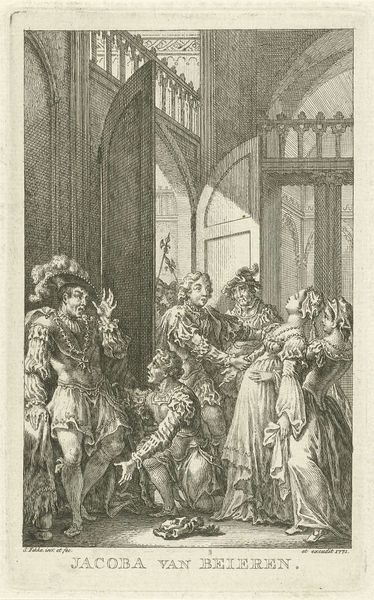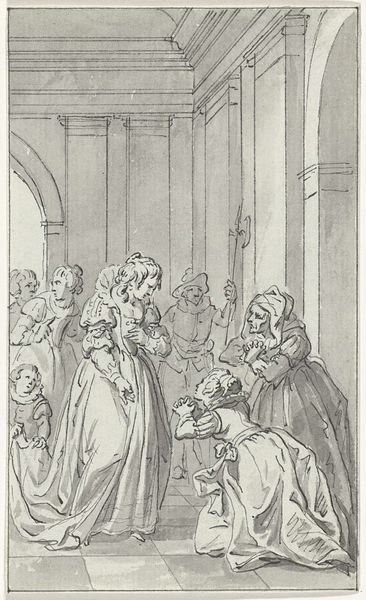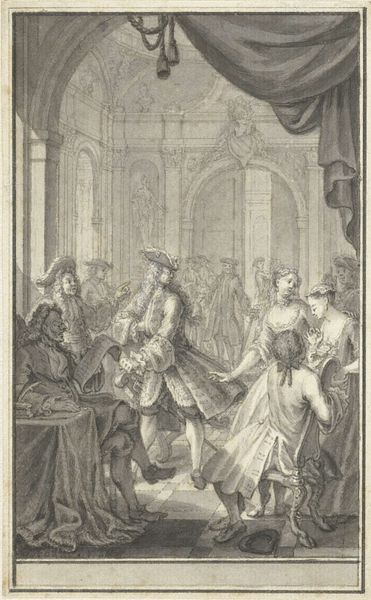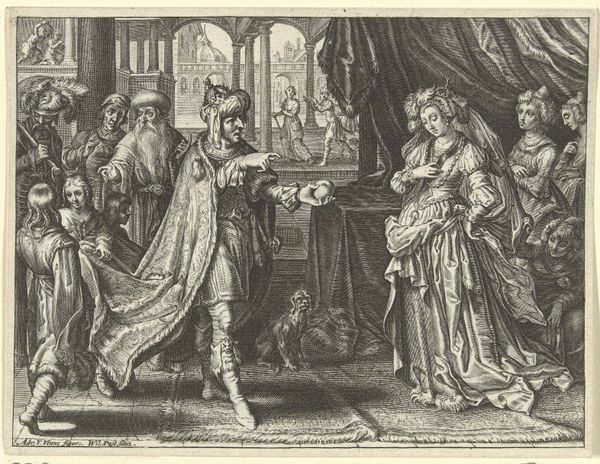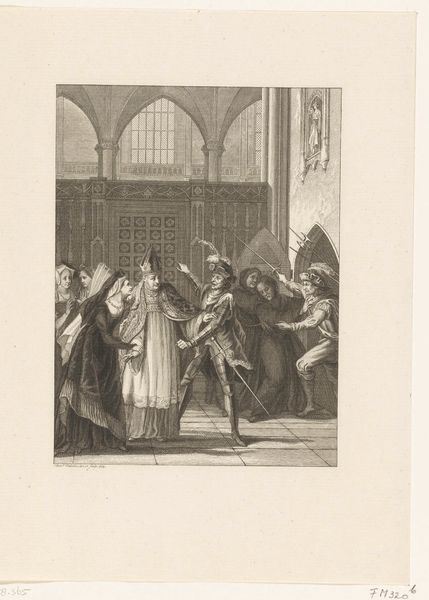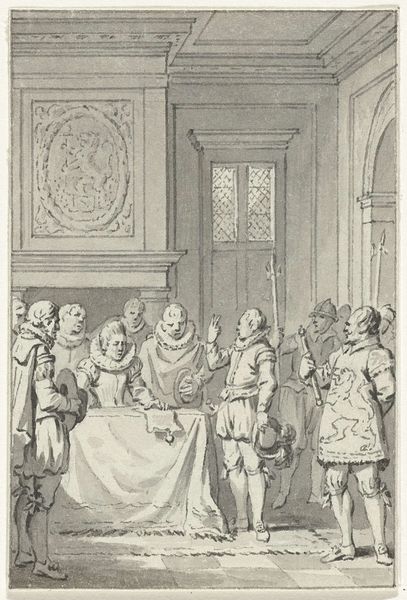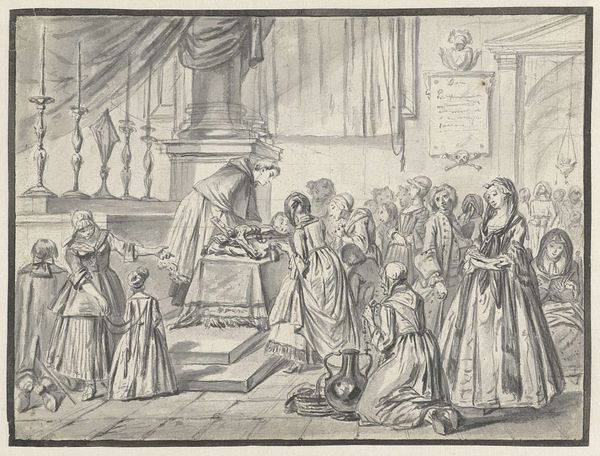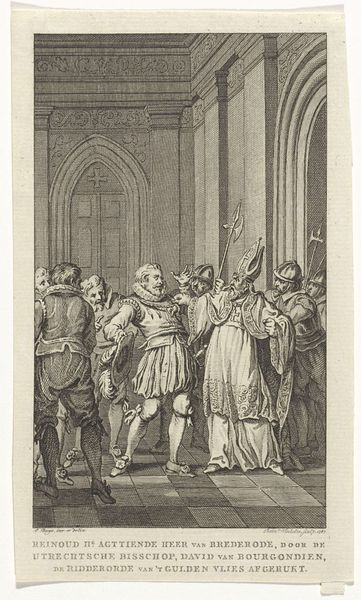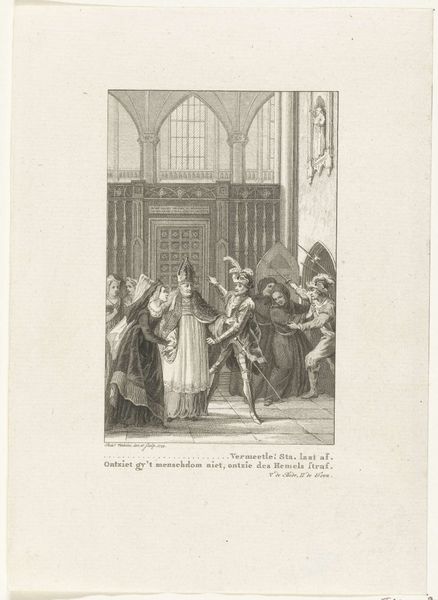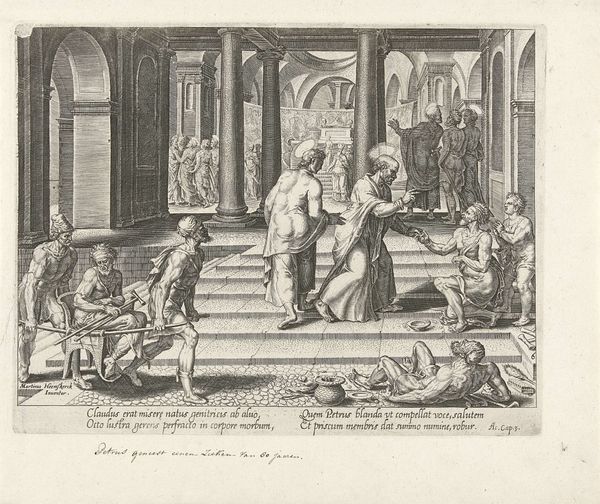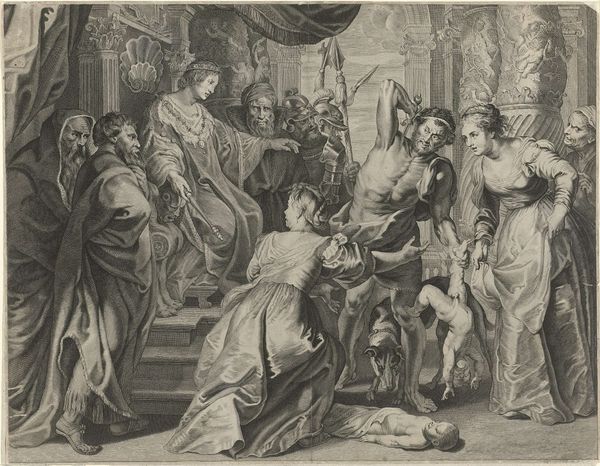
print, engraving
#
portrait
#
narrative-art
#
baroque
# print
#
history-painting
#
engraving
Dimensions: height 91 mm, width 161 mm
Copyright: Rijks Museum: Open Domain
Editor: This engraving from 1729 by Bernard Picart, titled "Maria I Stuart wordt geblinddoekt om onthoofd te worden," depicts a rather grim historical moment in Mary Queen of Scots' life. It feels very staged and dramatic, befitting its Baroque style. What do you make of its visual impact? Curator: Indeed, the dramatic staging speaks volumes. Consider how the central figure, Mary, is being prepared. Note the gesture of the blindfold. It isn't just a physical act, is it? The blindfold is rich with metaphorical potential—it symbolizes a denial of sight and reason and perhaps a turning away from worldly concerns as she confronts death. Editor: That's a powerful interpretation. I hadn't thought of it that way. What about the figures surrounding her, particularly those soldiers in the background? Curator: Look closely at how they stand. Their rigid, spear-carrying poses contrast sharply with the women attending to Mary. What message do you think that conveys about power dynamics or societal expectations, about the nature of martyrdom itself? This wasn't simply a moment of state execution but a carefully choreographed theater of power. Editor: So the ritualistic preparation combined with the rigid soldiery suggests something deeper than just an execution; it speaks to themes of justice, power, and the performance of death itself. It has also provided a vivid way of preserving her cultural memory. I think I'm beginning to understand that images truly do carry weight. Curator: Precisely. Images like this keep cultural memory alive through visual symbols laden with emotional impact. This helps to better engage with it even centuries after the fact.
Comments
No comments
Be the first to comment and join the conversation on the ultimate creative platform.
